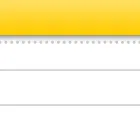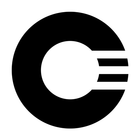
RunaBook
RunaBook is a robust, encrypted note-taking and knowledge management application designed for hierarchical organization. It offers advanced features like end-to-end encryption, hierarchical data modeling, and cross-device synchronization, catering to users who prioritize data security, efficient knowledge organization, and offline accessibility for their notes and information.
License
FreeCategories
Platforms
About RunaBook
Unlock Your Knowledge with RunaBook: Secure, Organized, and Accessible
RunaBook transforms how you manage information, providing a secure, highly organized, and accessible platform for all your notes, ideas, and knowledge. Unlike conventional note-taking apps, RunaBook stands out with its commitment to data privacy and a powerful hierarchical structure, making it ideal for personal knowledge bases, research, project management, and educational purposes.
Core Features & Benefits:
- End-to-End Encryption: Your privacy is paramount. RunaBook implements robust end-to-end encryption to ensure that all your notes and data are secure from unauthorized access, both in transit and at rest. This feature guarantees that only you can access your sensitive information.
- Infinite Hierarchical Structure: Organize your thoughts with unparalleled flexibility. RunaBook allows you to create an unlimited depth of nested categories and sub-categories, mimicking the natural flow of human thought. This tree-like structure helps you easily categorize, locate, and understand complex interconnections between your notes.
- Integrated Search & Tagging: Never lose a note again. With powerful integrated search capabilities and the ability to apply custom tags, finding specific information within your vast knowledge base is quick and effortless. This dual approach ensures maximum retrievability.
- Cross-Device Synchronization: Your notes, everywhere. RunaBook offers seamless synchronization across multiple devices, including desktop and mobile platforms. Whether you're at your computer or on the go, your information is always up-to-date and accessible, ensuring continuity in your workflow.
- Offline Accessibility: Work without interruption. RunaBook functions fully offline, allowing you to create, edit, and access your notes even without an internet connection. Changes are automatically synchronized once connectivity is restored, providing flexibility and reliability.
Advanced Capabilities for Enhanced Productivity:
- Rich Text Formatting & Markdown Support: Express yourself fully. RunaBook provides comprehensive rich text formatting options, enabling you to style your notes with bold, italics, lists, and more. Additionally, markdown support offers a streamlined way to format text for quick and efficient note-taking.
- Photo and Audio Notes: Beyond text. Capture information in various formats. Attach photos to your notes for visual records or record audio notes for capturing spontaneous ideas, lectures, or meetings, making RunaBook a versatile multimedia note manager.
- Portable Application Design: Take your knowledge with you. RunaBook can be run as a portable application, allowing you to carry your entire knowledge base on a USB drive. This feature is perfect for users who need secure access to their data across different systems without installation.
RunaBook is more than just a note app; it's a secure, comprehensive knowledge management system designed for discerning users who demand organization, privacy, and accessibility.
Pros & Cons
Pros
- Robust End-to-End Encryption ensures maximum data privacy.
- Infinite Hierarchical Structure allows for incredibly detailed and logical organization of notes.
- Full Offline Functionality with seamless cross-device synchronization.
- Portable application option provides excellent data mobility and control.
- Comprehensive search and tagging capabilities ensure easy information retrieval.
- Multimedia support like photo notes and audio recordings adds versatility.
Cons
- User interface may appear dated compared to modern alternatives.
- Collaborative features are limited or unclear, primarily suited for individual use.
- Mobile app presence (specifically beyond 'Android Things') and feature parity could be more robust.
- Learning curve for maximizing hierarchical organization might deter casual users.
What Makes RunaBook Stand Out
Uncompromised Data Privacy with End-to-End Encryption
RunaBook stands out by offering true end-to-end encryption for all your notes, ensuring that your sensitive information remains private and secure from any external access, a critical feature often missing in mainstream note applications.
Infinite Hierarchical Depth for Knowledge Organization
Beyond simple folders, RunaBook empowers users with an unparalleled ability to create arbitrarily deep, nested hierarchies, making it the ideal tool for building an intricate and comprehensive personal knowledge base that mirrors your thought processes.
True Offline Functionality with Seamless Sync
RunaBook provides complete offline operational capability, allowing you to work on your notes anywhere without internet access, while ensuring all changes seamlessly synchronize across devices once connectivity is restored.
Features & Capabilities
17 featuresExpert Review
RunaBook: A Deep Dive into Secure and Structured Knowledge Management
In the vast landscape of note-taking applications, RunaBook emerges as a compelling contender, particularly for users who prioritize data security, robust organization, and offline accessibility. This review delves into its key aspects, assessing its strengths and weaknesses to provide a comprehensive understanding of its value proposition.
User Interface and Experience:
RunaBook presents a straightforward, functional user interface. It eschews modern aesthetic flourishes for a more utilitarian design, which may appeal to users who value efficiency over visual complexity. The core navigation revolves around its tree-like hierarchical structure, prominently displayed on the left pane. This visual representation of nested notes is intuitive for those accustomed to file explorers or outlines. Creating new notes, folders, and moving items within the hierarchy is generally smooth, utilizing drag-and-drop functionality. However, users migrating from more visually rich or minimalist note apps might find the interface somewhat dated or lacking in contemporary design elements. The learning curve for basic operations is minimal, but mastering its advanced organizational capabilities requires a slight investment in understanding its hierarchical paradigm.
Core Functionality and Features:
Where RunaBook truly shines is in its feature set, especially concerning knowledge management and privacy. The standout characteristic is its End-to-End Encryption. In an era where data privacy is paramount, RunaBook's commitment to securing user information is commendable. This feature ensures that even if data were intercepted, it would be unreadable without the proper keys, providing a significant sense of security for sensitive notes and personal data.
The Infinite Hierarchical Depth is another cornerstone feature. This allows for incredibly granular organization of information. Whether you're building a complex personal wiki, managing research for multiple projects, or simply categorizing personal thoughts, the ability to nest categories endlessly provides unparalleled structural flexibility. This goes beyond simple tags or flat folder systems, empowering users to create a truly interconnected knowledge base.
Integrated Search and Tagging work in tandem to ensure information retrievability. While the hierarchical structure aids primary organization, the search function (including search by tags) acts as a powerful backup, enabling quick discovery of information regardless of its depth in the tree. This dual approach to organization and search is highly effective.
Cross-Device Synchronization and Cloud Sync are crucial for modern workflows. RunaBook's ability to keep notes updated across various devices (desktop and potentially mobile, given 'Support for Android Things' in the original features) is essential for seamless productivity. Coupled with Offline Accessibility, users can work on their data even without an internet connection, with changes syncing once connectivity is restored. This provides significant flexibility for users on the go or in environments with unreliable internet access.
For content creation, the support for Rich Text Formatting and Markdown caters to different user preferences. Whether you prefer a visual editor or a syntax-based approach, RunaBook allows for formatted notes. The inclusion of Photo Notes and Audio Recording expands its utility beyond text, allowing for multimedia capture within your knowledge base. Features like Web Clipper and Drag-and-Drop further enhance its utility as a comprehensive information gathering tool.
Unique Selling Points and Value Proposition:
RunaBook's primary unique selling points revolve around its security, organizational depth, and self-contained nature. The strong emphasis on End-to-End Encryption directly addresses growing concerns about data privacy in cloud-based services. For users handling sensitive client information, personal health data, or confidential research, this feature alone can be a decisive factor.
The Infinite Hierarchical Depth sets it apart from many mainstream note apps that often cap folder levels or rely heavily on flat tagging systems. This makes RunaBook excellent for niche applications like academic research, legal documentation, or complex project management where intricate categorization is necessary.
Furthermore, its Portable nature means the entire knowledge base can reside on a USB drive, offering unparalleled data sovereignty and mobility. This is particularly valuable for users who work across multiple machines or need to ensure their data never resides on a potentially insecure cloud server.
Areas for Improvement:
While strong in its core offerings, RunaBook does have areas where it could improve. The user interface, while functional, could benefit from a modernization pass to align with contemporary design trends, potentially enhancing user engagement. The ecosystem around mobile (Android Things mentioned, but broader mobile app availability and feature parity would be critical for many users) could also be expanded and clarified for a wider audience.
Collaborative features, if applicable to its privacy-focused model, are largely absent. For solo users, this is not an issue, but teams might find it limits its utility for shared knowledge bases. The 'Share notes' feature is listed, but its implementation details regarding collaboration versus simple sharing are not extensively clear.
Conclusion:
RunaBook is an excellent choice for users who prioritize privacy, powerful hierarchical organization, and offline accessibility in their note-taking and knowledge management workflows. Its end-to-end encryption and infinite tree structure make it a formidable tool for building secure, detailed personal knowledge bases. While its interface might not be the most aesthetically pleasing compared to some modern alternatives, its robust functionality, especially for those with complex organizational needs and a strong emphasis on data ownership, makes it a highly valuable application. It serves a specific niche exceptionally well, appealing to power users, researchers, and anyone needing a secure, self-contained information repository.













